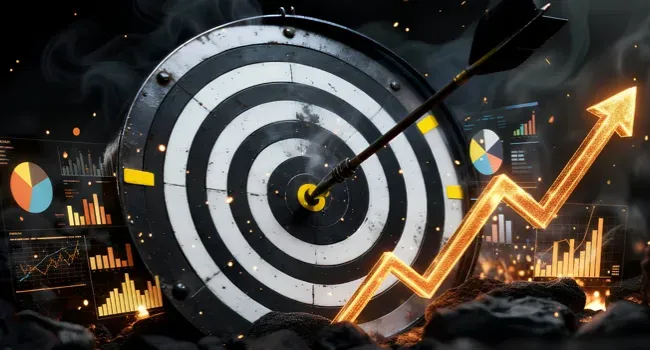How to Determine Marketing ROI for Your Lawn Care or Pest Control Company

For every dollar you spend in marketing, what are you getting back?
If you own a lawn care or pest control company (or a similar service-based company), then you are likely interested in growing your revenue year over year. This means you need to acquire new customers regularly to fuel that growth and make up for attrition. Even the best pest control and lawn care companies lose customers to relocation, job loss, etc. So you know your revenue goals, but have you taken the time to look at your customer acquisition costs, cost per lead, sales conversion, ROI on your marketing spend, and the like? No? Let’s dive in then, shall we
First of all, let’s determine your growth. Say you are a 2MM pest control company and your growth goal for next year is 20%. Allowing for a 10% cancellation rate, you’ll need about 500K in new sales to meet your growth goals. Now, what is the annual value for your customer? We see the industry average around $500. If we divide your revenue goal (500K) by your the annual value of your customer ($500), we see that you’ll need 1,000 new customers. Now, you know that unless you acquired every new customer on January 1, then the numbers aren’t perfect - but this will become cyclical- customers you gain at the end of the year will have an impact on your bottom line for years to come. For simplicity's sake, we’ll set that aside for the moment.
New Customer Goal > Lead Generation Goal
Most PCOs and lawn care companies we talk to estimate their sales close rate at 50%, meaning that for every prospect who speaks to a CSR (customer service representative) in your office, half become paying customers. If you need 1,000 customers and you close half your leads, you need twice the leads as customers, or 2,000. So that becomes your goal- you know that to keep growing, you need 2,000 people who are interested in your services to contact you.
What is Cost per Lead?
Now, let’s talk cost per lead for a moment. CPL is straightforward—it’s how much you spend per lead. To be clear, our definition of a lead is a prospect who contacts you and is interested in your services.
We like to target <$50 per lead, and I will get more into that in a moment.
Meeting your 2,000 lead goal and our <$50 CPL goal means a $100,000 budget. For an established website with good content, a mid-sized market, normal online competition, and a clean link profile, this is a totally attainable goal. This also means that your customer acquisition cost is 2X your CPL, or $100. Now, does this make sense for your business? To determine that, let’s look at ROI (return on investment), your customer retention rate, the lifetime value of a customer, and your profitability.
Calculating your Marketing ROI
Your revenue-based ROI is calculated by subtracting your marketing spend from your revenue and dividing it by your marketing spend.
(Revenue – Marketing Investment)
Marketing Investment
(500K (Revenue) – 100K (Marketing Investment)
100K (Marketing Investment)
This is a 4X return on investment; for every dollar you spend, you get 4 back. Keep in mind, this is for year one- it really starts to make sense if you hold on to your customers for a few years, you pay your acquisition costs out of the gate, and subsequently enjoy the profit in the following years. This is why your customer retention rate is so important- it is much cheaper to hold on to paying customers than it is to gain new ones.
If we recalculate using a customer's lifetime value, it becomes a bit clearer. With a 10% cancellation rate, you’ll retain 90% of your customers each year (without incurring any additional marketing expenses).
In our scenario, in the first year, you acquire 1,000 customers at a cost of $100,000, bringing you $500,000 in revenue and between $50,000 and $100,000 in profit (depending on your business).
One year after your initial acquisition, you still have 90% of your customers, or 900 customers, which generate $450,000 in revenue.
Two years after your initial acquisition, you retain 90% of your 900 customers, or 810, generating $405,000 in revenue.
Three years after the initial acquisition, you retain 90% of your 810, or 729. That’s $364,500 in revenue.
The four-year return on investment is $1,719,500 in revenue, for a spend of $100,000. Even if you spent twice as much ($200,000) in year one, this makes good business sense. Here is your four-year ROI result:
(1.7MM (Revenue) – 100K (Marketing Investment)
100K (Marketing Investment)
That is a 16X revenue-based ROI. Obviously if you spent $100 per lead in year one you would incur a 200K spend, with a 8K four year revenue-based ROI.
Mature vs. Young Campaigns
The numbers I have been using as an example in this blog post are more typical of a mature campaign, one that has been professionally managed for at least one year. You will recall that earlier in the post I wrote:
For an established website with good content, a mid-sized market, normal online competition, and a clean link profile, this is a totally attainable goal.
An established website is one with a high-quality score, a good domain age, and other attributes that Google (and other search engines) consider when determining where it ranks for particular search queries. If you are just starting up, or if you haven’t done much digital marketing for your website, or if the digital marketing that has been done for your site by another agency is outside of Google’s best practices, then it takes longer to achieve good results.
For our clients, we recommend treating the first year as a build year- where we focus on establishing a good base of operations and building your online presence to achieve future growth goals. The following table shows the first year as a spend-and-build year and the projected results for each year thereafter.
This is a snapshot of what attributing customer acquisition to the original marketing costs looks like. You would likely continue a marketing spend, fueling continuing growth consistent with your goals. In other words, your spend wouldn’t be $0 in the future; it would be spent acquiring new customers, so it isn’t relevant to this table.
Tracking Your Spend
To calculate your ROI, you’ll need to track your leads and customers. One of the great things about inbound marketing is the ability to do just that. Here at Coalmarch, we use Google Analytics and Call Tracking Metrics to track and record every lead your website generates. We pair this with not only your retainer spend for our digital marketing platform, but also every dollar you spend on Google AdWords for your PPC account.
With our websites, we count only first-time calls and get a quote form submissions - that way, we aren’t artificially inflating lead numbers with existing customers, vendors, or solicitors. The end result is that we know exactly how many dollars are going into your marketing efforts, and, with our detailed tracking, how many leads are being generated for your business.
If you are interested in learning more about our inbound digital marketing platform and how it can help your lawn care or pest control business get to the next level, fill out the form below!




